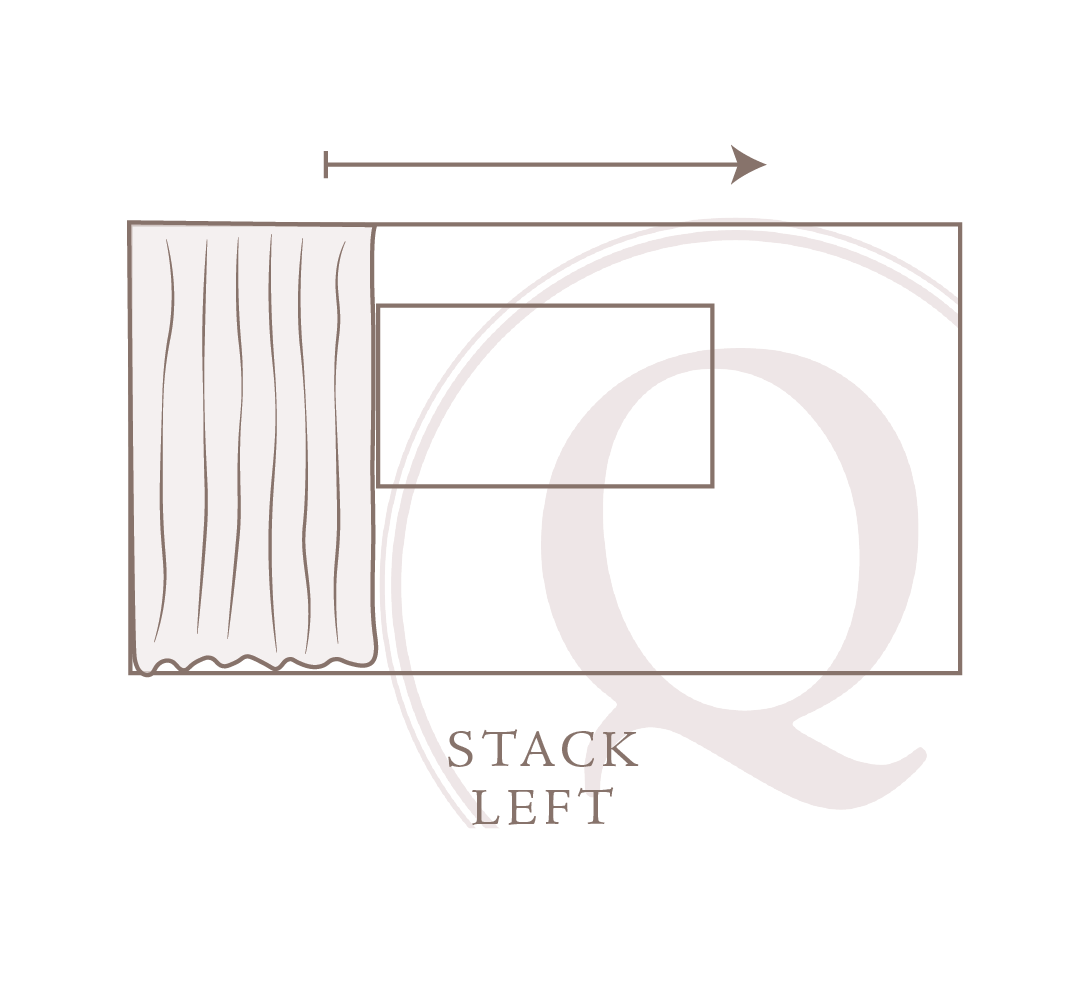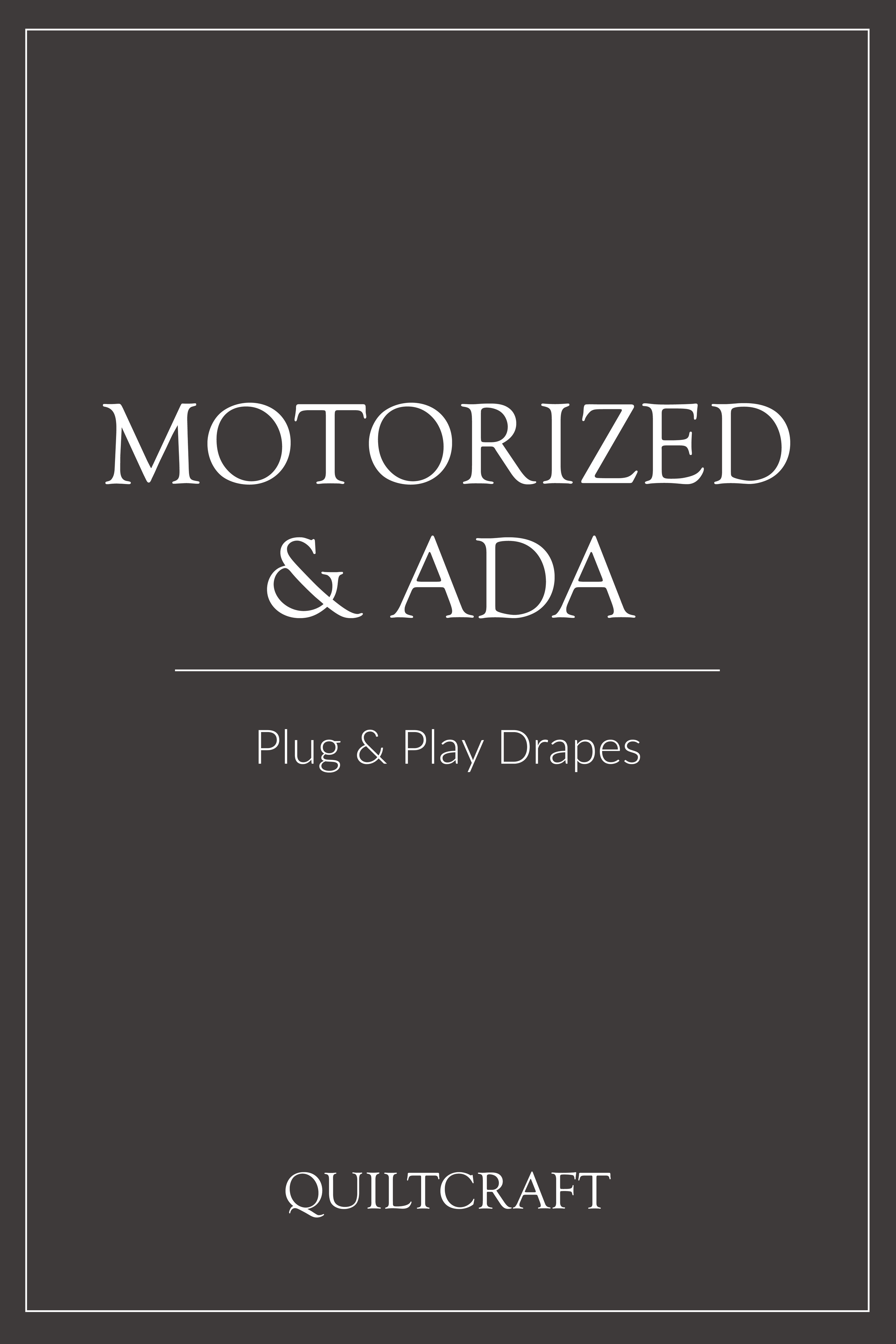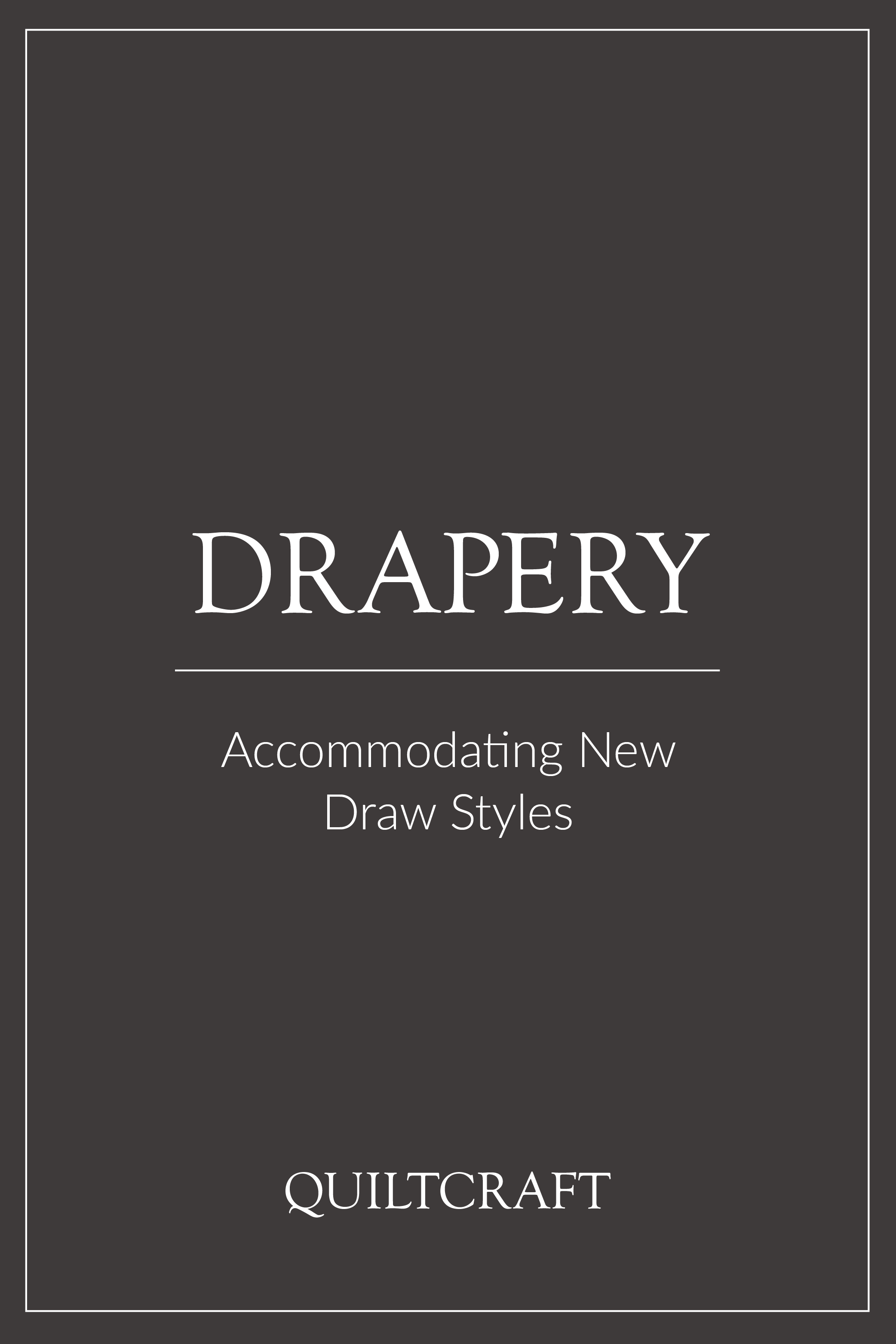Drapery Draw (Part 1)
Where Should I Stack My Drapes?
Room designs vary drastically depending on a myriad of factors. The window wall may have a drapery pocket, case goods along it, it may have a PTAC, a centered window, and offset window, a soft closet and more. With so many variables, the drapery stack must be customized to fit. And so it is, there are many different ways to stack your drapery and we’ve published a resource card just for that reason.
It’s important to note that “drapery draw” refers to the location/direction of the drape when it’s stacked; whereas “drapery stack back” refers to the amount of fabric that is going to be covering the space behind the drape once it’s stacked.
You can reference our resource card, which is intended to be more of a quick reference for you and your team and this post will go into further detail about each option.
Stack Right & Stack Left
Stack Right & Stack Left refer to the side of the track where the drapery ‘stacks’ or stays when it is completely opened. Drapery that traverses in one direction is referred to as Stack Right & Stack Left for clarity of direction but may also be called a ‘one-way traversing panel right or left’. When using the stack nomenclature you are referring to where the drape hangs when looking out the window.
Traversing panels have a master carrier on the leading edge of the drape, and the other edge is manufactured with a return to the wall, accordingly.
Baton drawn, cord drawn & motorized are all available options. (See our Hardware Resource Card)
Center Open Pair
A center open pair, is exactly what it sounds like. It is two panels of equal width which traverse towards one another on the same hardware track.
If using batons, both leading edges will require batons, and the opposite edges will return to the wall.
Baton drawn, cord drawn & motorized are all available options. (See our Hardware Resource Card)
Offset Pair
The offset pair is a variation of a center open pair. Here though, the two panels which make up the pair are of different/unequal widths. Identical to the functionality of the center open pair, the right and left leading edges are outfitted with master carriers and the opposite edges may be made with returns to the wall.
Baton drawn is the only option here (assuming a single hardware track), although the same functionality could be accomplished with two cord drawn or motorized hardware tracks used in conjunction with one another.
Another very important concept in addition to the direction you choose to stack your drapery is knowing how much the drapery will actually take up when completely opened. This is known as Stack back and we’ve written a post teaching you how to figure it out with a simple formula. Check it out, ‘What is Drapery Stack Back?’
Don’t miss Part Two of this post!
Check Out More Drapery Related Resources













